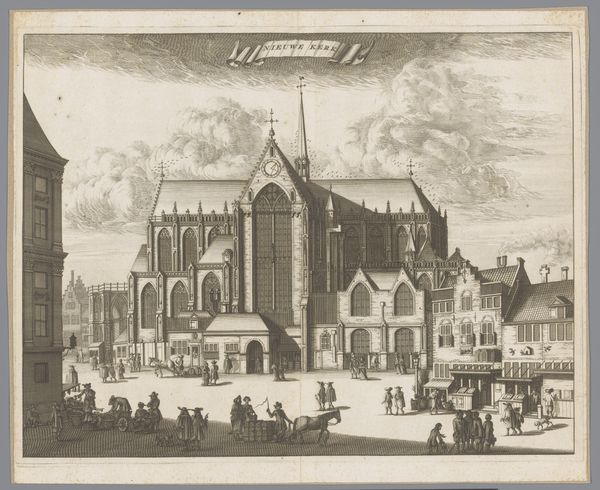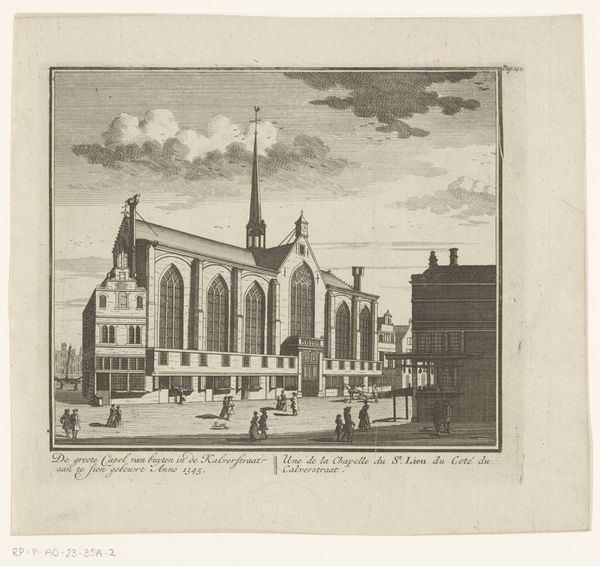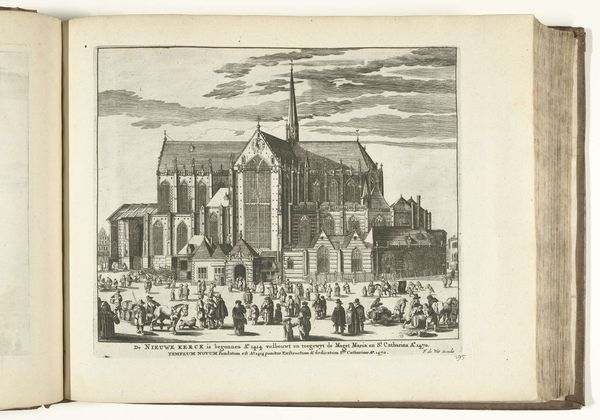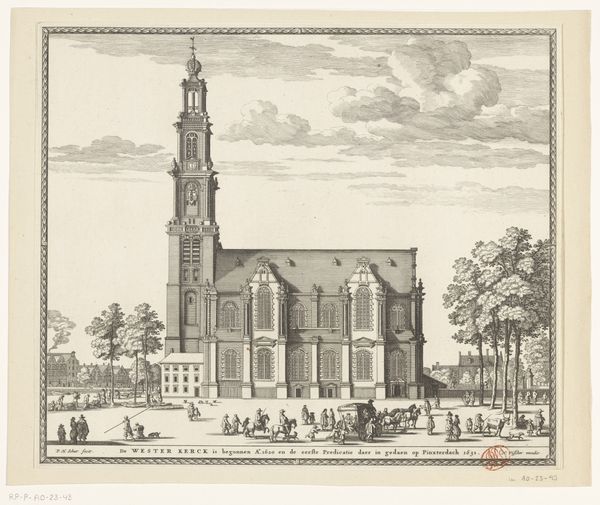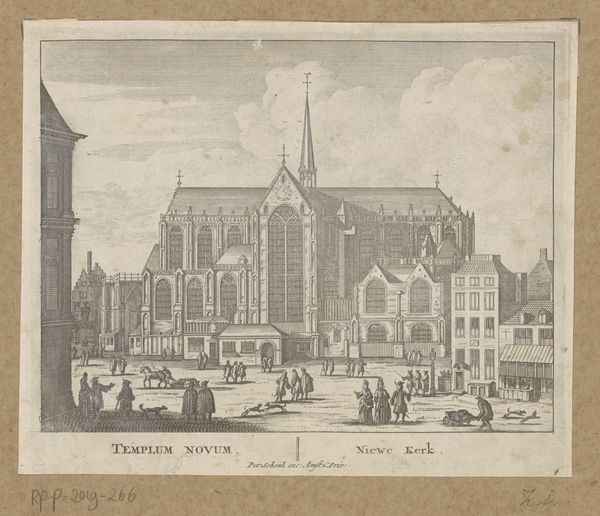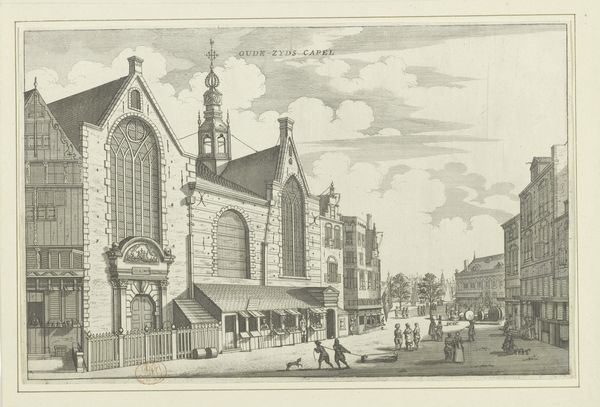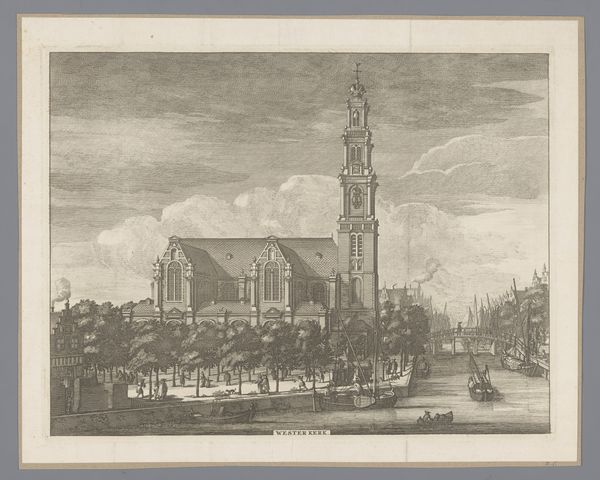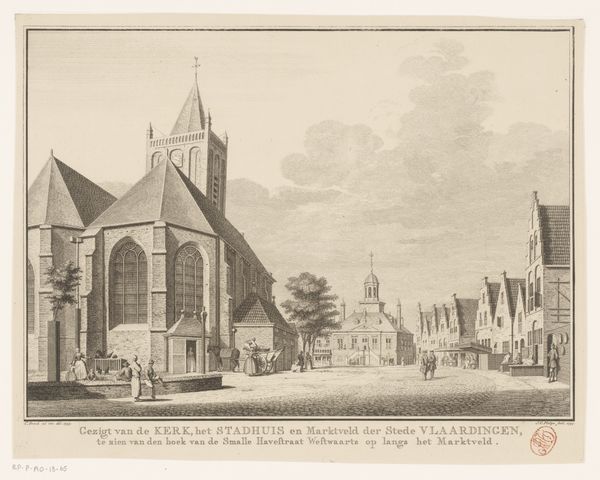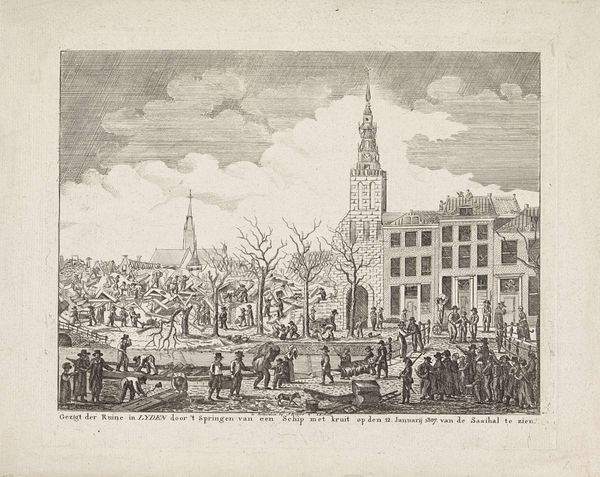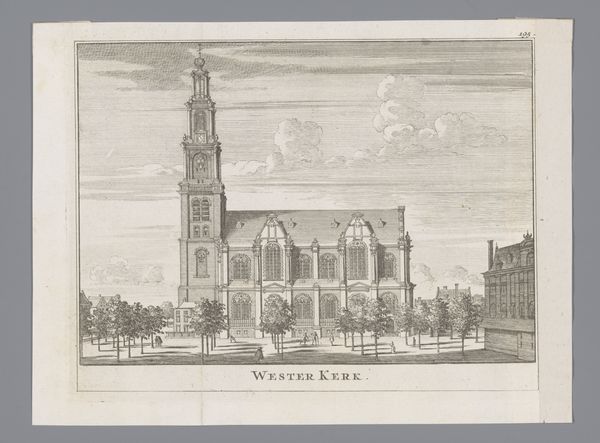
Gezicht op de Heilige Stede (Nieuwezijds Kapel) te Amsterdam 1662 - 1728
0:00
0:00
anonymous
Rijksmuseum
print, engraving, architecture
#
dutch-golden-age
# print
#
old engraving style
#
historical photography
#
line
#
cityscape
#
engraving
#
architecture
#
realism
Dimensions: height 261 mm, width 312 mm
Copyright: Rijks Museum: Open Domain
Curator: Looking at this print, what jumps out at you? For me it is somber but evocative. The detail is amazing considering the medium, and the whole cityscape seems suspended between eras. Editor: It definitely has a kind of static quality, but the city feels alive at the same time, it’s fascinating. The people and animals really give it movement. The composition feels very controlled. Well, let's orient our listeners; we’re viewing “Gezicht op de Heilige Stede (Nieuwezijds Kapel) te Amsterdam.” Curator: Ah yes, a view of the Heilige Stede, the New Side Chapel, in Amsterdam. A creation rendered through engraving sometime between 1662 and 1728 by an anonymous hand. What I appreciate here is the slice of daily life—a visual record embedded within the history of Amsterdam itself. Editor: Absolutely. You get such a strong sense of the urban fabric. Thinking about its place within Dutch Golden Age art, how does it play with notions of realism and civic pride, and does the absence of a known artist shape our interpretation at all? Curator: The very *lack* of a known author focuses our attention. Instead of genius, we contemplate function, perhaps even the rising merchant class seeking to record and control *their* spaces, a collective assertion of power. Editor: Right, because it gives you an insight into how people perceive the world at that time. Consider, for instance, how the choice of subject—a religious structure—reflects shifting cultural priorities and perhaps even the tensions within the Dutch Republic itself? The chapel, prominently positioned, acts as a visual anchor, yet it is also intertwined with everyday scenes of commerce and community. Curator: The interplay *between* sacred space and profane activity – that's where things get really interesting. Does it question or does it reaffirm those established social structures? Editor: And also, if we consider it alongside feminist art historical methodologies, does it invite a subversive rereading about social inequality, class, gender within what is presented as a vision of ideal urban harmony? Curator: Considering its potential function as propaganda, the details are remarkable—we're invited into the frame not just as observers, but almost as participants. It blurs time and space, creating its own reality in which the relationship between place, power, and social identity become visible. Editor: A reality brought forth via this little anonymous print… it really packs a punch when you start digging into it.
Comments
No comments
Be the first to comment and join the conversation on the ultimate creative platform.

